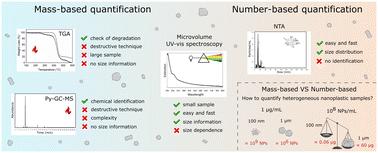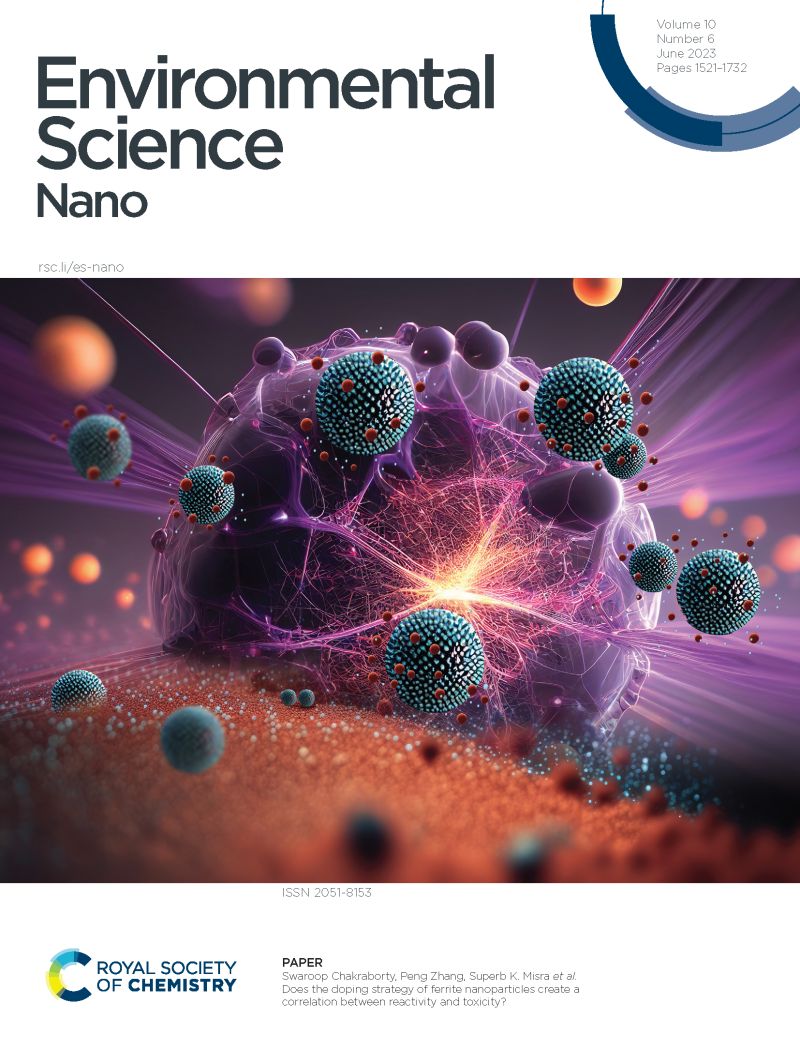Quantitative evaluation of true-to-life nanoplastics using UV-visible spectroscopy and comparative analytical techniques
IF 5.1
2区 环境科学与生态学
Q1 CHEMISTRY, MULTIDISCIPLINARY
引用次数: 0
Abstract
The growing concern over microplastic pollution has led to increased focus on environmental nanoplastics, which are smaller, more dynamic, and present unique challenges in both quantification and risk assessment. Nanoplastics exhibit high variability in size, shape, chemical composition, and surface chemistry, complicating their detection and quantification through conventional analytical techniques developed for nanomaterial analysis. One of the key challenges in nanoplastic research is the lack of realistic, environmentally relevant test materials that accurately mimic the characteristics of nanoplastics found in natural environments. In this study, we generated polystyrene-based nanoplastics from fragmented plastic items and use them to produce controlled test materials for evaluating and comparing analytical techniques under well-defined conditions. Specifically, we investigated the potential of microvolume UV-visible (UV-vis) spectroscopy as a practical and non-destructive technique for the quantification in stock suspensions, aiming to expand the analytical toolkit for environmental nanoplastic research. UV-vis spectroscopy was compared with established mass-based techniques, pyrolysis gas chromatography-mass spectrometry and thermogravimetric analysis, as well as nanoparticle tracking analysis, a number-based method. The comparative analysis demonstrated that UV-vis spectroscopy provides a rapid, accessible, and effective mean of quantifying nanoplastics, especially when sample volumes are limited. Despite some underestimation of nanoplastic concentrations relative to mass-based techniques, UV-vis measurement results were consistent in terms of order of magnitude, showing reliable trends across different methods. This study underscores the potential of UV-vis spectroscopy as a valuable tool for quantifying realistic nanoplastic test materials and supporting the development of future applications in environmental nanoplastic research.

使用紫外可见光谱和比较分析技术对真实的纳米塑料进行定量评价
随着人们对微塑料污染的日益关注,人们越来越关注环境纳米塑料。纳米塑料体积更小,更具活力,在量化和风险评估方面都面临着独特的挑战。纳米塑料在尺寸、形状、化学成分和表面化学方面表现出高度的可变性,这使得用于纳米材料分析的传统分析技术的检测和定量变得复杂。纳米塑料研究的关键挑战之一是缺乏现实的、与环境相关的测试材料,以准确地模拟自然环境中发现的纳米塑料的特性。在这项研究中,我们从塑料碎片中生成聚苯乙烯基纳米塑料,并使用它们来生产受控测试材料,用于在明确规定的条件下评估和比较分析技术。具体来说,我们研究了微体积紫外可见光谱(UV-vis)作为一种实用的非破坏性技术在原液混悬液中定量的潜力,旨在扩大环境纳米塑料研究的分析工具。将UV-vis光谱与现有的基于质量的技术、热解气相色谱-质谱分析、热重分析以及基于数字的纳米颗粒跟踪分析进行了比较。对比分析表明,紫外可见光谱提供了一种快速、方便、有效的纳米塑料定量方法,特别是在样品量有限的情况下。尽管相对于基于质量的技术,对纳米塑料浓度的估计有所低估,但UV-vis测量结果在数量级上是一致的,显示了不同方法之间可靠的趋势。这项研究强调了紫外可见光谱作为一种有价值的工具来量化现实纳米塑料测试材料的潜力,并支持未来在环境纳米塑料研究中的应用。
本文章由计算机程序翻译,如有差异,请以英文原文为准。
求助全文
约1分钟内获得全文
求助全文
来源期刊

Environmental Science: Nano
CHEMISTRY, MULTIDISCIPLINARY-ENVIRONMENTAL SCIENCES
CiteScore
12.20
自引率
5.50%
发文量
290
审稿时长
2.1 months
期刊介绍:
Environmental Science: Nano serves as a comprehensive and high-impact peer-reviewed source of information on the design and demonstration of engineered nanomaterials for environment-based applications. It also covers the interactions between engineered, natural, and incidental nanomaterials with biological and environmental systems. This scope includes, but is not limited to, the following topic areas:
Novel nanomaterial-based applications for water, air, soil, food, and energy sustainability
Nanomaterial interactions with biological systems and nanotoxicology
Environmental fate, reactivity, and transformations of nanoscale materials
Nanoscale processes in the environment
Sustainable nanotechnology including rational nanomaterial design, life cycle assessment, risk/benefit analysis
 求助内容:
求助内容: 应助结果提醒方式:
应助结果提醒方式:


